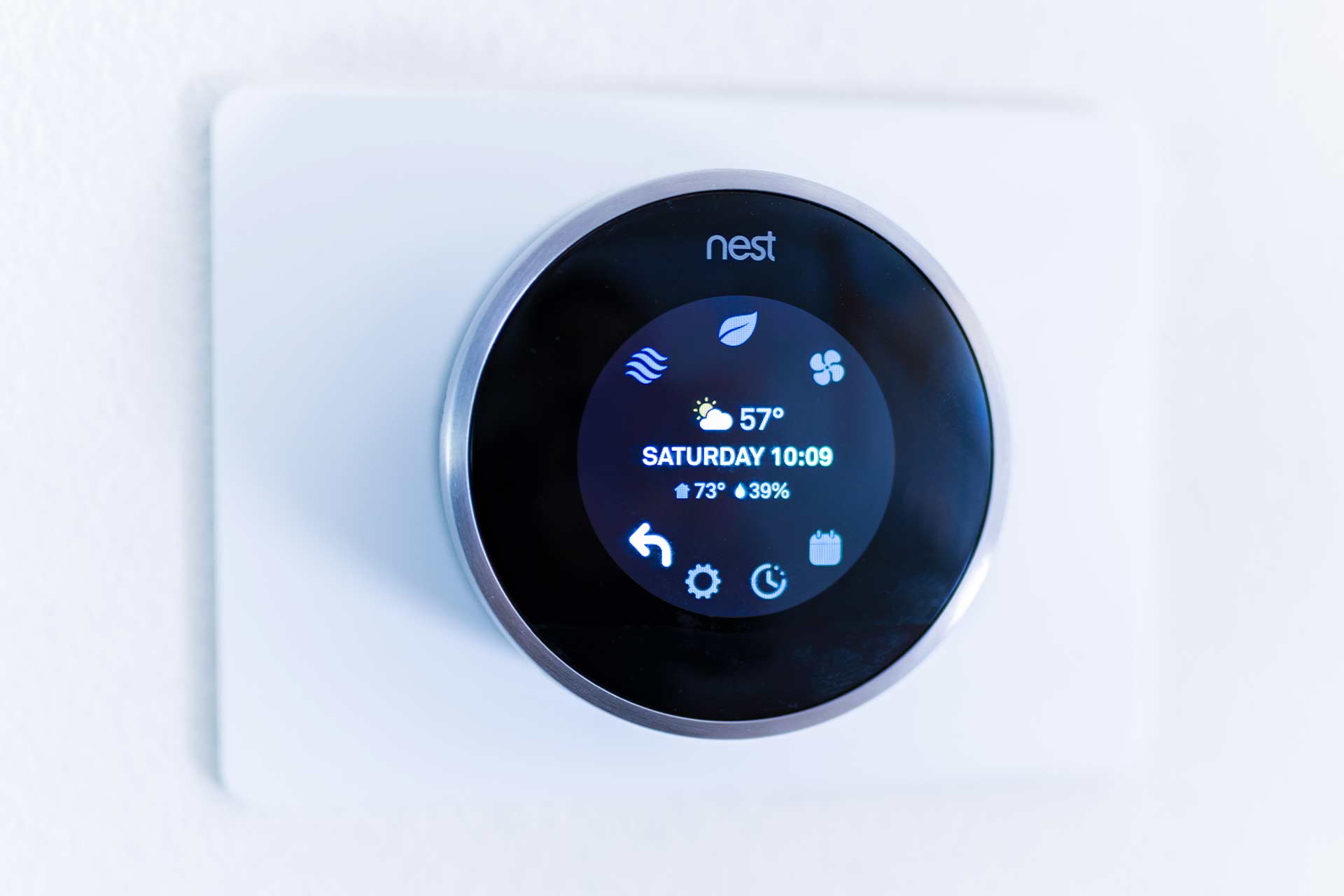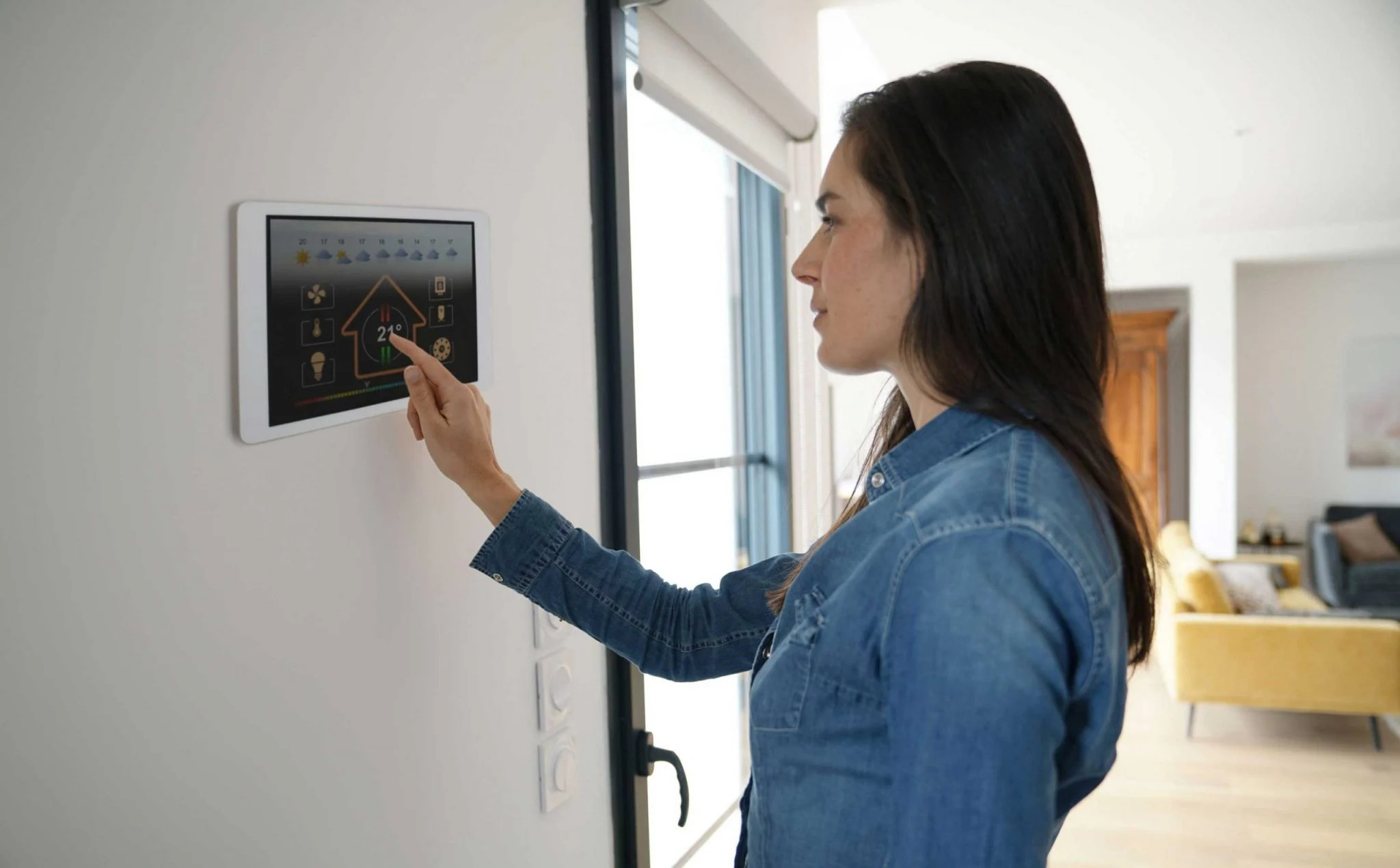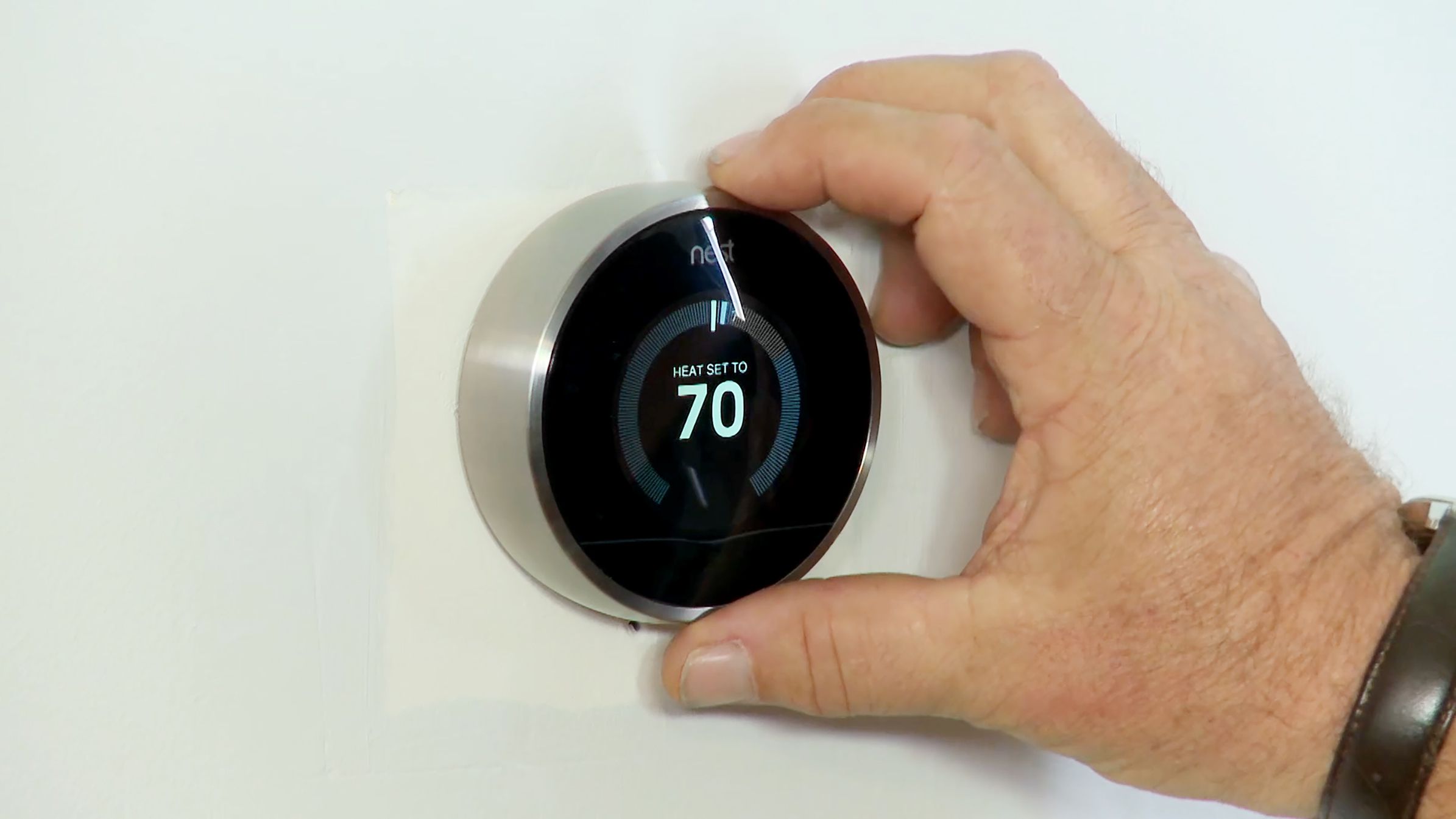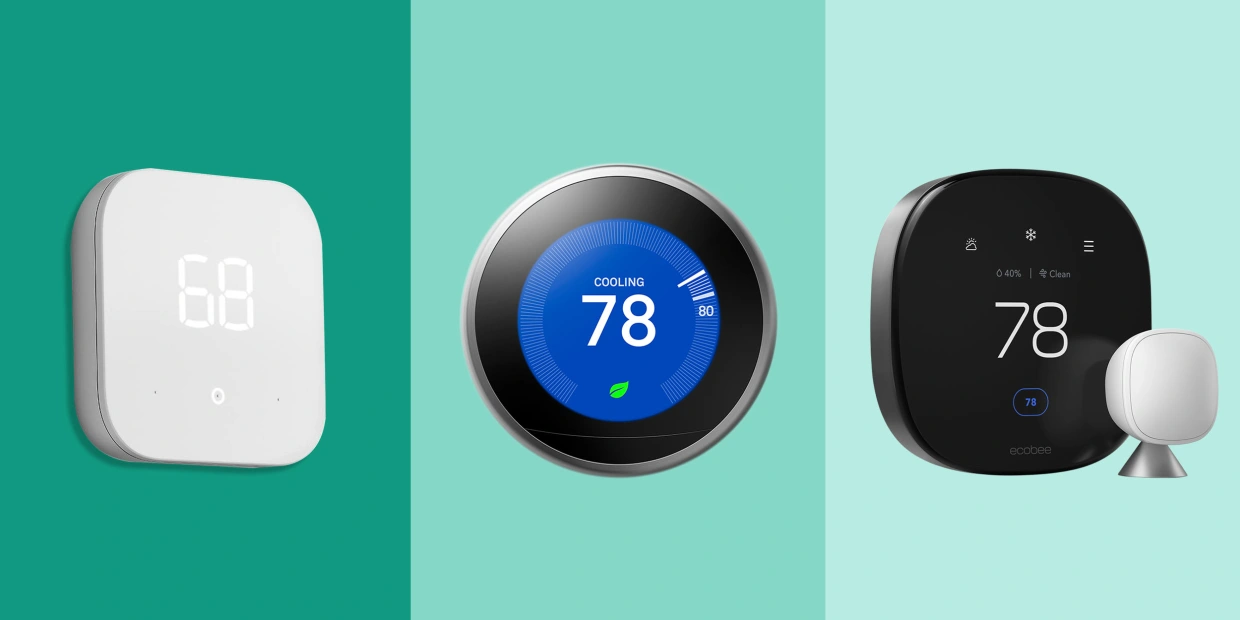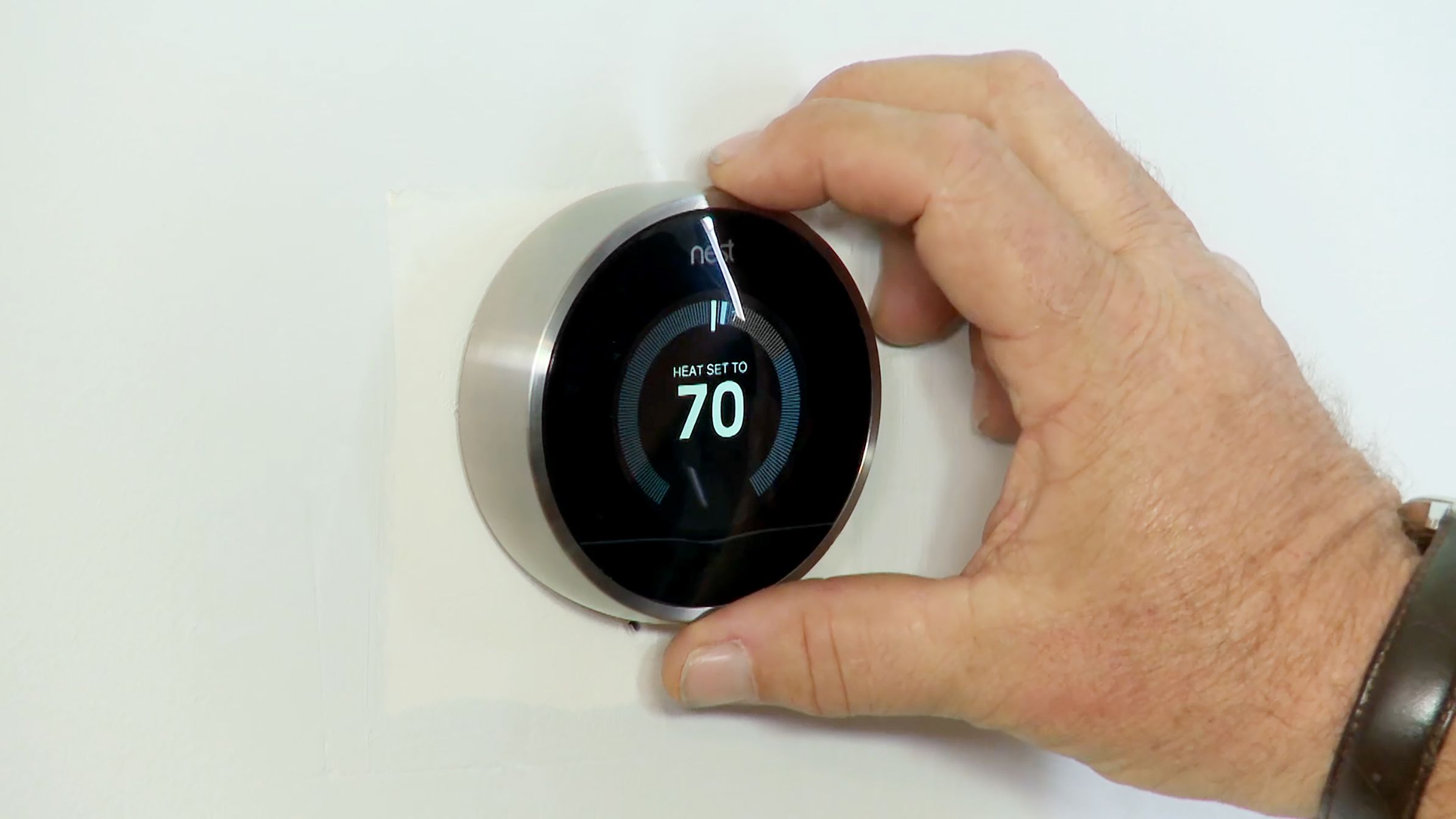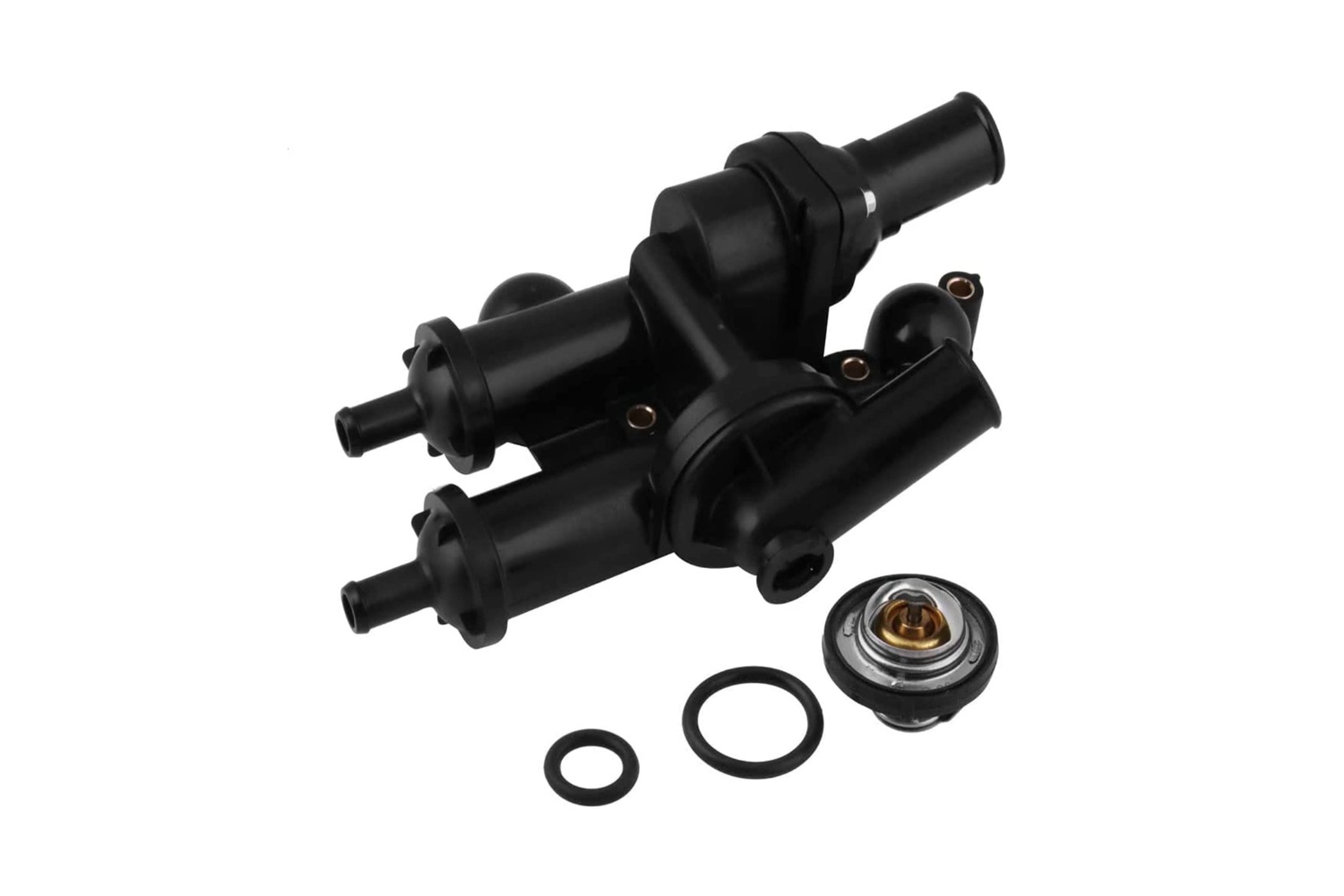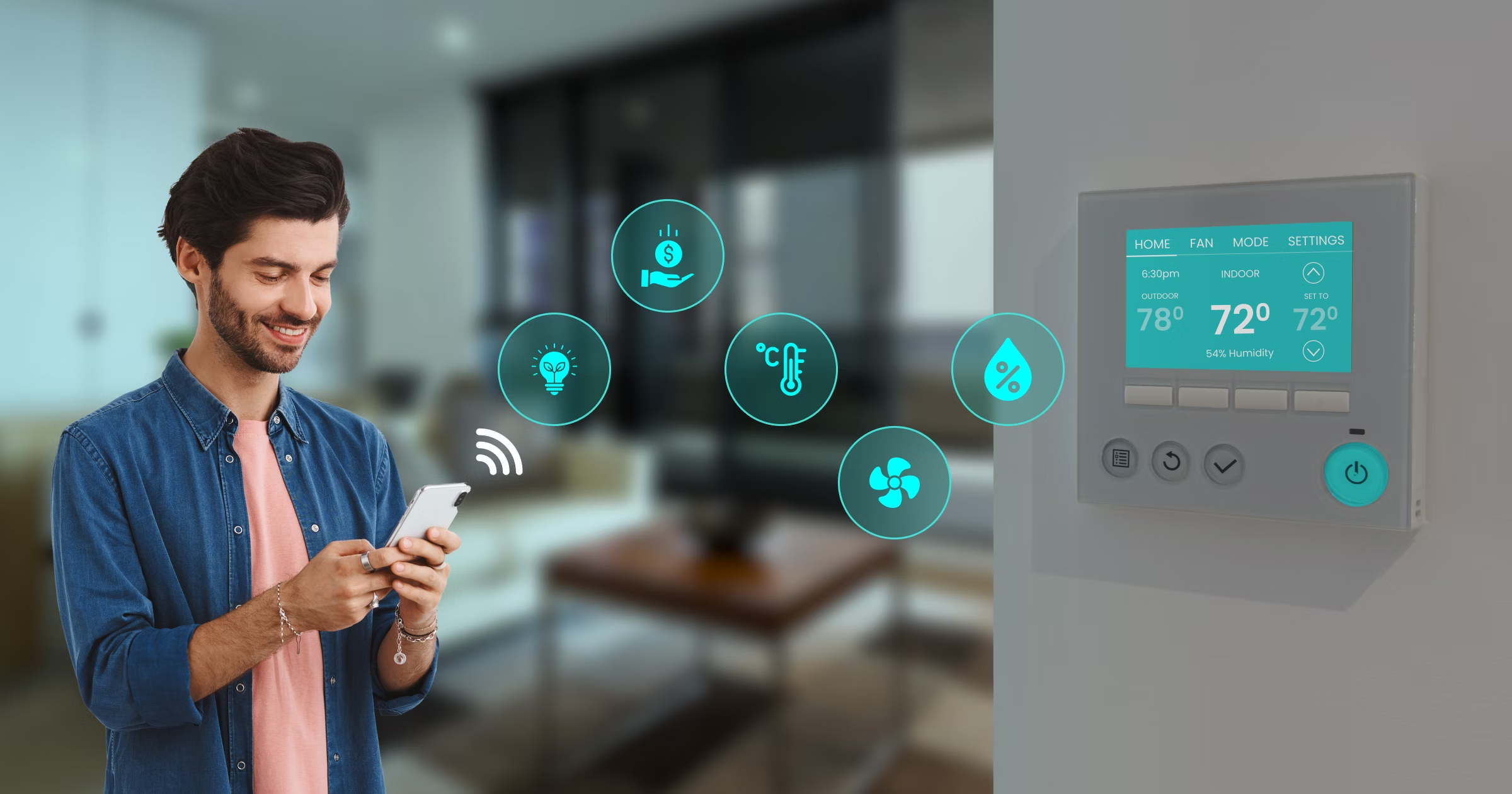Introduction
Welcome to the world of smart home comfort and energy efficiency! When it comes to controlling the temperature in your home, thermostats play a crucial role. However, if you’re considering upgrading your thermostat or installing a new one, you might be wondering how many thermostats you actually need.
A thermostat is a device that allows you to regulate the temperature in your home by automatically turning your heating and cooling systems on and off. With advancements in technology, modern thermostats offer an array of features, such as programmable settings, remote control, and even integration with smart home systems.
While it may seem like a simple question, determining the number of thermostats you need requires careful consideration of several factors. The size and layout of your home, the type of HVAC system you have, your energy efficiency goals, personal comfort preferences, and financial considerations are all important aspects to take into account.
In this article, we will delve into these factors to help you make an informed decision about the number of thermostats you need. So, let’s dive in and explore the world of thermostats and how they can enhance your home comfort and energy efficiency!
What is a thermostat?
A thermostat is an essential component of your heating, ventilation, and air conditioning (HVAC) system that allows you to control the temperature within your home. It acts as a regulator, sensing the current temperature and making adjustments to maintain your desired level of comfort.
In its simplest form, a thermostat consists of a temperature sensor and a switch. The temperature sensor measures the ambient temperature in the room, while the switch controls the activation and deactivation of the heating or cooling systems. When the temperature rises above or falls below the set threshold, the thermostat sends a signal to the HVAC system to adjust accordingly.
Traditional thermostats are manually operated, requiring you to physically adjust the temperature settings. However, with advancements in technology, smart thermostats have emerged, offering more convenient and energy-efficient features.
Smart thermostats can be programmed to follow a schedule, allowing you to set different temperatures for different times of the day. This not only enhances comfort but also helps conserve energy by automatically reducing heating or cooling when the house is unoccupied or during nighttime hours. Additionally, many smart thermostats can be controlled remotely through mobile apps, enabling you to adjust the temperature even when you’re away from home.
Furthermore, smart thermostats often come equipped with learning capabilities, where they analyze your temperature preferences and adjust settings accordingly. This learning feature optimizes energy usage and ensures personalized comfort tailored to your lifestyle.
Overall, thermostats are essential tools that provide you with control over your home’s temperature, helping you achieve a comfortable environment while minimizing energy waste. Now, let’s explore the factors that you need to consider when determining the number of thermostats your home requires.
Factors to Consider When Determining the Number of Thermostats Needed
When it comes to determining the number of thermostats your home needs, several factors come into play. Understanding these factors will help you make an informed decision that ensures optimal comfort and energy efficiency throughout your living space. Let’s explore these factors:
1. Size and Layout of the Home: The size and layout of your home are crucial considerations. Larger homes with multiple floors or distinct zones may benefit from multiple thermostats. This allows for independent temperature control in different areas, ensuring that each part of your home maintains the desired temperature.
2. Zoning: Zoning refers to dividing your home into different zones based on heating and cooling needs. Each zone has its own thermostat, allowing independent temperature control. Zoning can be particularly useful if certain areas of your home experience different temperature variations or if there are specific comfort requirements for different rooms.
3. HVAC System Type: The type of HVAC system in your home will influence the number of thermostats needed. Single-zone systems typically have one thermostat that controls the temperature for the entire house. On the other hand, multi-zone systems, such as dual-zone or multi-split systems, require multiple thermostats to regulate temperature in different zones or rooms.
4. Energy Efficiency Goals: Energy efficiency is a key consideration for many homeowners. Smart thermostats can help you achieve energy savings by adjusting temperatures based on occupancy or time of day. If your goal is to maximize energy efficiency, having multiple thermostats can provide more precise control over different zones, enabling you to reduce energy consumption in unused areas.
5. Personal Comfort Preferences: Everyone has different comfort preferences. Having multiple thermostats allows you to customize the temperature in different areas according to each occupant’s needs. This can prevent conflicts over the thermostat setting and ensure individual comfort throughout your home.
6. Financial Considerations: The cost of installing and maintaining multiple thermostats should be taken into account. While having multiple thermostats can enhance comfort and energy efficiency, it may require a higher initial investment. Consider your budget and weigh the long-term energy savings against the upfront costs when deciding on the number of thermostats.
By considering these factors, you can determine the ideal number of thermostats needed to create a comfortable and energy-efficient environment in your home. Remember to consult with a professional HVAC contractor to assess your specific requirements and recommend the best thermostat configuration for your unique circumstances.
Size and Layout of the Home
The size and layout of your home are important factors to consider when determining the number of thermostats you need. The goal is to ensure that every area of your home maintains the desired temperature for optimal comfort. Let’s explore how the size and layout of your home affect thermostat placement:
– Large Homes: If you have a large home with multiple floors or expansive living spaces, a single thermostat may not be sufficient to maintain consistent temperatures throughout the entire house. In such cases, it is advisable to consider installing multiple thermostats to create separate zones for temperature control.
– Multi-Floor Homes: Homes with multiple floors often face different temperature variations due to the varying heat distribution. Each floor may have its own heating or cooling needs, making it beneficial to have a thermostat on each floor. This allows for independent temperature control, ensuring comfort on each level.
– Open Floor Plans: Open floor plans are becoming increasingly popular in modern homes. While they create a spacious and interconnected environment, they can pose challenges when it comes to temperature control. Heat or cool air can easily distribute throughout the open space, making it difficult to maintain consistent temperatures. In such cases, having multiple thermostats strategically placed in different zones can help regulate temperatures more effectively.
– Distinct Zones: Certain homes have distinct zones or areas with different heating or cooling requirements. For example, a home with a basement or an attic that functions as a living space may have different temperature needs compared to the rest of the house. In these cases, having a separate thermostat for each zone allows for precise temperature control in specific areas.
It’s important to note that the placement of thermostats is vital to their effectiveness. They should be installed in areas that accurately reflect the temperature of the respective zones. Avoid placing thermostats near drafty areas, direct sunlight, or heat-emitting sources, as this can affect temperature readings and lead to inefficient operation.
When considering the size and layout of your home, think about the specific temperature requirements in different areas and how multiple thermostats can ensure comfort throughout each zone. Consulting with an HVAC professional can provide valuable insights and recommendations tailored to your home’s unique characteristics.
By taking into account the size and layout of your home, you can determine the ideal number and placement of thermostats to achieve optimal comfort and energy efficiency.
Zoning
Zoning refers to the division of your home into separate areas, or zones, for more precise temperature control. This is achieved by installing multiple thermostats, each responsible for regulating the temperature in a specific zone. Zoning can offer several benefits in terms of comfort and energy efficiency. Let’s explore how zoning can enhance your HVAC system:
– Customized Temperature Control: Zoning allows you to customize the temperature in different areas of your home based on individual preferences and needs. For example, you can have a higher temperature in the living room during the day while keeping the bedrooms cooler at night. This level of control ensures that every space is at the desired temperature, promoting personal comfort.
– Addressing Temperature Variations: Some homes have areas that are consistently warmer or cooler due to factors such as sunlight exposure, insulation variations, or architectural design. Zoning provides the flexibility to balance these temperature variations by adjusting the heating or cooling in specific zones. This helps eliminate discomfort and ensures consistent temperatures throughout your home.
– Energy Efficiency: Zoning can significantly improve energy efficiency by directing heating or cooling only to occupied zones. Instead of heating or cooling the entire house when only a portion is being used, zoning allows you to isolate and condition the areas that are in use. This targeted approach can result in energy savings by avoiding unnecessary heating or cooling of unoccupied spaces.
– Reduced HVAC System Strain: With zoning, each zone has its own thermostat, enabling independent temperature control. This means that your HVAC system only needs to meet the heating or cooling demands of the specific zones in use, reducing the strain on the system. By avoiding the constant cycling of the entire system, you can extend its lifespan and potentially reduce maintenance and repair costs.
It’s important to note that implementing zoning requires careful planning and installation by a professional HVAC contractor. They will assess your home’s layout, ductwork, and HVAC system to determine the ideal number of zones and the placement of thermostats. The installation may involve retrofitting existing systems or incorporating dampers and zone control panels into new HVAC installations.
Zoning can be advantageous for homes with distinct temperature control needs, such as multi-story houses, those with finished basements or attics, or homes with significant temperature variations among different areas. By implementing zoning, you can create a more comfortable living environment while optimizing energy usage, ultimately leading to cost savings and improved energy efficiency.
Consulting with an HVAC professional will ensure that zoning is designed and implemented effectively for your specific home, maximizing its benefits and making temperature control a breeze.
HVAC System Type
The type of HVAC system you have in your home is a key factor in determining the number of thermostats you need. Different HVAC system types require varying thermostat configurations to achieve optimal temperature control and energy efficiency. Let’s explore some common HVAC system types and how they impact thermostat requirements:
– Single-Zone Systems: A single-zone HVAC system is designed to heat or cool the entire house using a single thermostat. This means that a single thermostat controls the temperature for all areas, resulting in uniform heating or cooling throughout the home. While this can be a cost-effective option, it may not provide the level of customization or temperature control needed for larger homes or homes with varying comfort preferences.
– Multi-Zone Systems: Multi-zone systems, also known as multi-split or multi-zone ducted systems, are designed to provide independent temperature control in different areas or zones of your home. These systems are equipped with dampers that can direct the heated or cooled air to specific zones based on the signals from multiple thermostats. Each thermostat is responsible for controlling the temperature in its respective zone. This allows for personalized comfort and targeted energy usage.
– Dual-Zone Systems: Dual-zone systems are a specific type of multi-zone system that divide the house into two zones. For example, the upper and lower floors may be treated as separate zones, each with its own thermostat. Dual-zone systems are commonly used in homes with significant temperature variations between floors.
– Variable Refrigerant Flow (VRF) Systems: VRF systems are highly energy-efficient HVAC systems that can provide heating and cooling to multiple zones simultaneously. These systems use advanced technology to modulate refrigerant flow based on the heating or cooling requirements of each individual zone. VRF systems often require sophisticated controls and specialized thermostats to maximize their efficiency and performance.
It’s important to consult with an HVAC professional to assess the type of system you have or plan to install. They can evaluate your home’s layout, ductwork, and heating and cooling needs to recommend the appropriate thermostat configuration. They will consider factors such as the number of zones, the compatibility of the HVAC system with zoning controls, and the integration of smart thermostats if desired.
The type of HVAC system in your home will ultimately determine the number of thermostats needed and the level of temperature control you can achieve. By selecting the right thermostat configuration for your HVAC system type, you can optimize comfort, energy efficiency, and overall performance.
Energy Efficiency Goals
Energy efficiency is a top priority for many homeowners, and the number of thermostats you need can directly impact your ability to achieve your energy-saving goals. Here are some considerations regarding energy efficiency when determining the number of thermostats needed:
– Zonal Temperature Control: Having multiple thermostats allows for zonal temperature control in your home. Instead of heating or cooling the entire house when only specific areas are in use, you can adjust the temperature in each zone independently. This targeted approach helps conserve energy by avoiding unnecessary heating or cooling in unoccupied spaces.
– Smart Thermostat Features: Smart thermostats offer innovative features to enhance energy efficiency. These include occupancy sensors, learning capabilities, and adaptive algorithms that optimize temperature settings based on your routine and preferences. With multiple thermostats, you can take full advantage of these features by creating individualized settings for each zone, maximizing energy savings throughout your home.
– Programmable Temperature Schedules: Programmable thermostats, whether smart or traditional, allow you to set temperature schedules based on your daily routine. This enables you to reduce heating or cooling when your home is typically unoccupied or when occupants are asleep. With multiple thermostats, you can tailor these schedules to the specific needs of each zone, fine-tuning energy usage and avoiding wasteful heating or cooling in unused areas.
– Occupancy-Based Control: Smart thermostats equipped with occupancy sensors can detect when a zone is unoccupied and adjust the temperature accordingly. This prevents unnecessary energy consumption by automatically reducing heating or cooling in areas that are not in use. With multiple thermostats, you can extend occupancy-based control to different zones, optimizing energy efficiency throughout your home.
– Integration with Energy Management Systems: If you have an energy management system in your home, it can integrate with multiple thermostats to enhance efficiency further. These systems can monitor energy usage, analyze data, and provide insights for optimizing temperature settings and HVAC operation. By utilizing multiple thermostats, you can gather more comprehensive data about energy usage from different zones, making adjustments to increase efficiency.
When it comes to energy efficiency goals, having multiple thermostats can provide greater control and customization over your HVAC system. This allows you to fine-tune temperature settings, optimize energy usage, and potentially reduce utility costs. Consider your energy-saving objectives and consult with an HVAC professional who can recommend the ideal thermostat configuration to meet your goals.
Remember to regularly monitor and adjust your thermostat settings to align with changing occupancy patterns, seasons, and weather conditions. By continuously optimizing temperature control, you can ensure a comfortable living environment while minimizing energy waste.
Personal Comfort Preferences
Personal comfort is subjective and can vary among individuals living in the same home. When determining the number of thermostats needed, it’s important to consider the diverse comfort preferences of the occupants. Here’s how personal comfort preferences influence thermostat requirements:
– Temperature Variations: Different individuals may have different temperature preferences. Some may prefer a cooler environment, while others may prefer warmer temperatures. Multiple thermostats allow each person to control the temperature in their specific zone or room to suit their comfort needs. This ensures that everyone is satisfied and can enjoy their desired level of comfort.
– Varying Room Usage: Different areas of the home might be used for different purposes. For example, a home office may require cooler temperatures for increased productivity, while a living room may be kept slightly warmer for comfort during relaxation. Having multiple thermostats allows for customized temperature control in each area, catering to the specific comfort preferences of the occupants.
– Sleeping Comfort: Sleep is essential for our well-being, and the temperature of the bedroom plays a significant role in quality rest. Some individuals prefer a cooler sleeping environment, while others prefer a warmer one. With multiple thermostats, each bedroom can have its own temperature control, enabling personalized sleeping comfort for each occupant.
– Companion Spaces: In some cases, certain spaces within a home are used by specific individuals or households. For example, a basement suite or an attached guest house may have separate living quarters with separate occupants. Installing additional thermostats in these areas ensures that each household can adjust the temperature according to their personal comfort preferences.
– Conflict Resolution: In households where conflicts arise over thermostat settings, having multiple thermostats can help resolve disagreements. Each person can have control over the temperature in their designated zone, minimizing conflicts and creating a harmonious living environment.
By considering personal comfort preferences, you can create a home environment that caters to the needs and comfort of each individual. Multiple thermostats provide the flexibility to customize temperatures in different zones or rooms, ensuring that everyone feels comfortable and content within their living spaces.
Remember to communicate with other occupants of the home and reach a consensus on temperature settings that accommodate and respect everyone’s personal comfort preferences. By finding a balance, you can create a comfortable environment that promotes well-being and harmony among the household.
Financial Considerations
Financial considerations are an important aspect to weigh when determining the number of thermostats needed for your home. While having multiple thermostats can offer enhanced comfort and energy efficiency, it’s essential to assess the associated costs and potential savings. Here are some financial factors to consider:
– Initial Investment: Installing multiple thermostats will have an initial upfront cost. This includes the purchase of thermostats, labor for installation, and any necessary adjustments to your HVAC system. The total cost will depend on the number of thermostats required and the complexity of the installation. It’s advisable to obtain quotes from reputable HVAC professionals to compare costs and choose the most suitable option for your budget.
– Energy Savings: Multiple thermostats can contribute to energy savings by allowing zonal temperature control. By heating or cooling specific areas instead of the entire house, you can potentially reduce energy consumption and lower utility bills. The cost savings will depend on various factors such as the size of your home, climate conditions, and usage patterns. You can estimate potential savings by considering the energy efficiency ratings of your thermostats and analyzing historical utility bills.
– Return on Investment (ROI): Evaluating the ROI is crucial to determine if the investment in multiple thermostats is financially beneficial in the long run. Calculate the estimated payback period by comparing the upfront costs with the expected energy savings. If the projected savings outweigh the costs within a reasonable timeframe, the investment can be considered financially viable.
– HVAC System Compatibility: Consider whether your HVAC system is compatible with multiple thermostats. Some older systems may require upgrades or modifications to accommodate zonal control. Assessing the compatibility and associated costs is essential to make an informed decision. Consult with an HVAC professional to determine if your current system can support multiple thermostats or if system upgrades are necessary.
– Maintenance and Repairs: Having multiple thermostats means you may have more components that require maintenance and potential repairs over time. Consider the additional maintenance costs and the longevity of the thermostats when factoring in long-term financial considerations. Smart thermostats may also require firmware updates or battery replacements, which should be included in your financial planning.
It’s important to perform a comprehensive cost-benefit analysis to assess whether the financial investment in multiple thermostats aligns with your budget and goals. While there may be upfront costs, the long-term energy savings can offset these expenses. Consider consulting with an HVAC professional who can provide insights and help you make an informed decision based on your financial considerations.
Remember that the financial aspect should be evaluated alongside other factors such as comfort, energy efficiency goals, and home size. By finding the right balance, you can make a well-rounded decision that benefits both your comfort and your wallet.
Conclusion
Determining the number of thermostats needed for your home is a decision that requires careful consideration of several factors. The size and layout of your home, zoning capabilities, HVAC system type, energy efficiency goals, personal comfort preferences, and financial considerations all play a crucial role in making the right choice.
By evaluating the size and layout of your home, you can determine if multiple thermostats are necessary to maintain consistent temperatures throughout different zones or floors. Implementing zoning can provide customized temperature control, addressing variations in comfort requirements and optimizing energy efficiency.
Understanding your HVAC system type is essential for thermostat configuration. Whether you have a single-zone system, a multi-zone system, or a VRF system, selecting the appropriate number of thermostats is crucial for optimizing control and achieving desired comfort levels.
Considering your energy efficiency goals can lead to energy savings and reduced utility costs. Multiple thermostats facilitate zonal temperature control, enabling personalized settings and minimizing energy consumption in unoccupied areas. Smart thermostats with advanced features and integration with energy management systems can further enhance energy efficiency.
Personal comfort preferences should not be overlooked when determining the number of thermostats. Customized temperature control in different zones allows each occupant to enjoy their preferred level of comfort, preventing conflicts and promoting a harmonious living environment.
Lastly, financial considerations should be taken into account. Assessing the initial investment, potential energy savings, return on investment, and maintenance costs helps make an informed decision that aligns with your budget and goals.
In conclusion, selecting the right number of thermostats for your home requires a thoughtful evaluation of various factors. Consulting with an HVAC professional can provide valuable insights to ensure that you choose the most suitable thermostat configuration for your unique circumstances. With the right thermostats in place, you can enjoy optimal comfort, energy efficiency, and control over your home’s temperature, enhancing your overall living experience.







